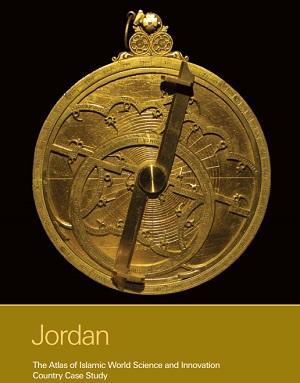Digital wellbeing should be a public health priority for the Arab region
21 October 2025
Published online 3 September 2013

The science, technology and innovation landscape in Jordan is comparatively healthy given the challenges it faces, according to a new country study from the Royal Society's Atlas of Islamic World Science and Innovation .
The country was lauded in the Royal Society report for investing in science and technology in an attempt to improve its fortunes. The Hashemite Kingdom's arid conditions and its lack of oil reserves – in stark contrast with bordering Saudi Arabia – mean its natural resource economy is poor.
Jordan did not experience significant uprisings like neighbouring countries, but it felt the impact of the Arab Spring through an influx of millions of refugees.
Sami Mahroum, the report's lead researcher and co-author, said: "Most countries with similar challenges and competing demands for resources would have shied away from investing any resources in STI. Jordan sees STI as part of the solution to its limited resources problem."
The report outlined weak areas in the Jordanian system that need to be fixed if the country is to gain a stronger STI foothold.
There is a need to overhaul the K-12 system to make it more occupational and job market oriented.
What Jordan lacks in natural resources it makes up for in human capital. Jordan's Department of Statistics estimates its current population at 6,483,032, of which almost 60% are below the age of 25. Harnessing this potential holds the key to sustainable development, says the report.
Utilising the potential of a young population will come at a considerable economic cost and a shift in policy reflecting social change. The government will need to invest in educating young Jordanians in a way that promotes critical and innovative thinking and scientific enquiry, a departure from education systems based on rote learning which demand obedience and conformity.
Many Jordanians leave formal education after high school, so "there is a need to overhaul the K-12 system to make it more occupational and job market oriented," says Mahroum. The government is already taking significant educational steps, such as improving curricula, training teachers and promoting international accreditation of schools.
UNESCO's science report in 2010 describes Arab universities as producing "bureaucrats with little innovative capacity". Jordan is no exception. The Royal Society report underlines the need for Jordanian universities to include entrepreneurial and commercial skills in their curricula, which are critical for graduates to make the most of STI degrees and respond to market demands.
"The strength of many Jordanian universities lies in their relatively good infrastructure," says Najib Abou Karaki, dean of the Faculty of Sciences at the University of Jordan. "But the Jordanian higher education system also has its weaknesses such as frequent change in strategies and leaders, plus lack of funds to sustain projects and very static procedures and regulations".
While Jordan is a regional pioneer in ICT and medical services industry and STI enjoys a strong patronage from the monarchy, R&D funding for basic research and to explore potential areas of development is limited, and academia remains poorly integrated with industry. Mahroum says R&D is largely rationalized and research takes place only with very specific purpose with little investment into high-risk potential areas of growth.
Abou Karaki agrees, describing R&D in Jordan as still "very superficial, having no real perspective, only decorative and not sustainable."
According to the report, the complexity of the country's national innovation system (NIS), responsible for coordinating a large network of stakeholders to promote R&D, often makes it hard for researchers to access funding for their work. It says that greater access to finance will be essential for successful innovation in Jordan in the future.
doi:10.1038/nmiddleeast.2013.143
Stay connected: